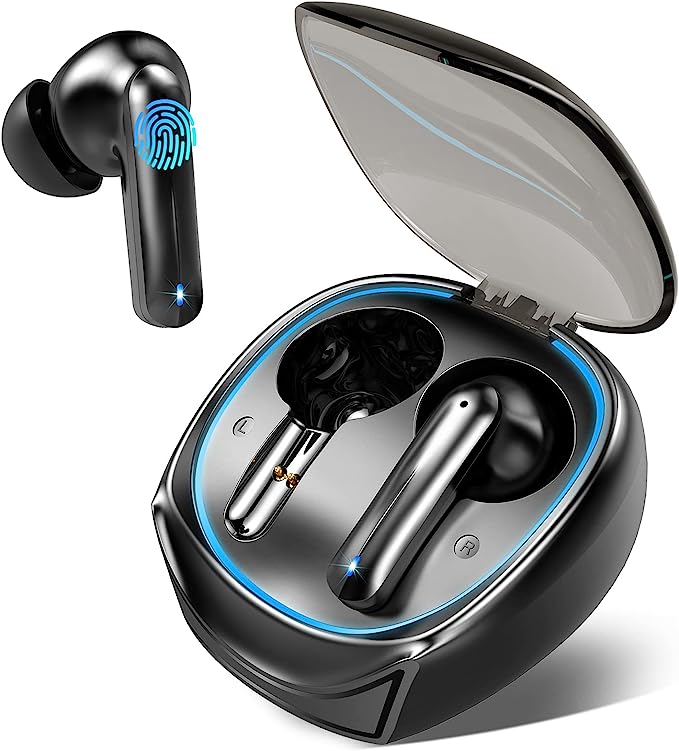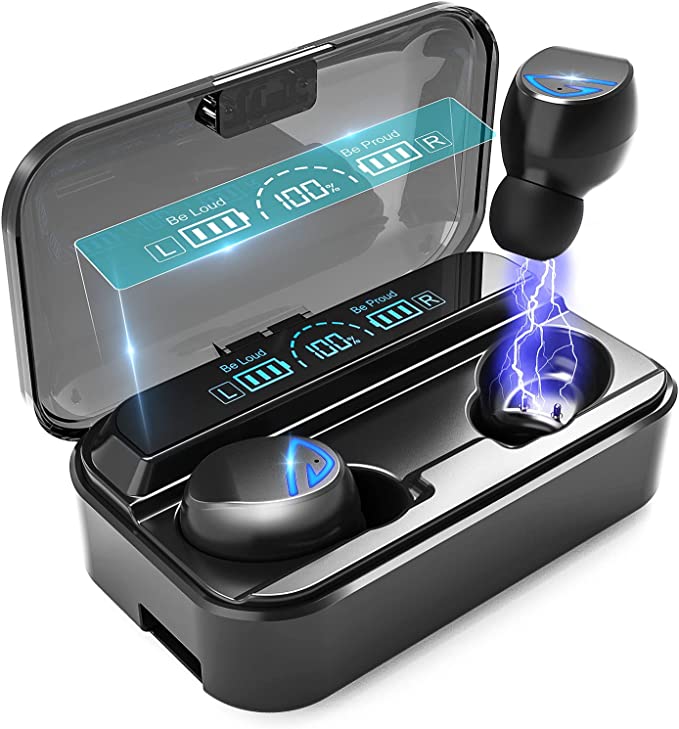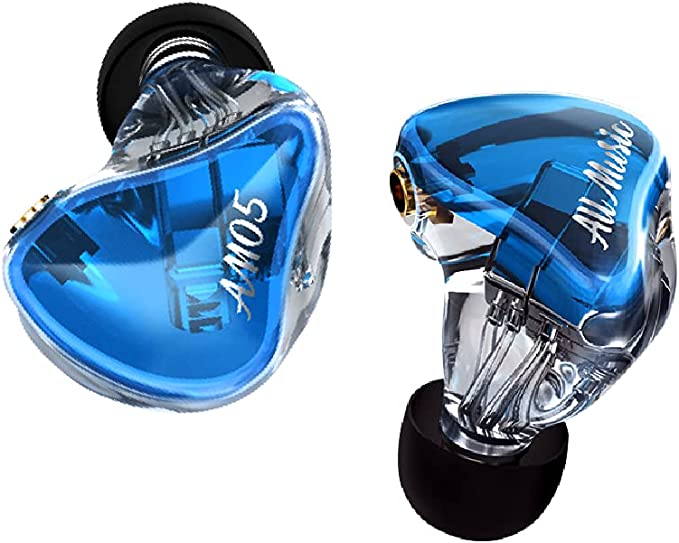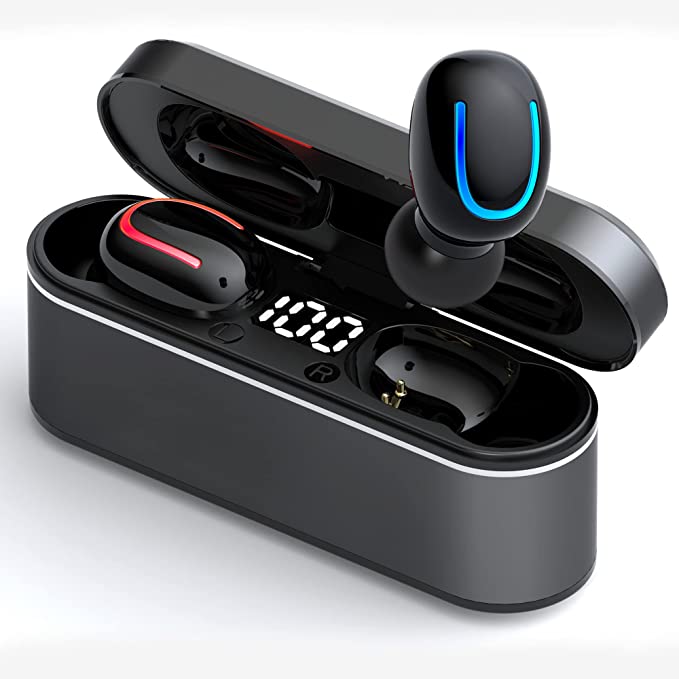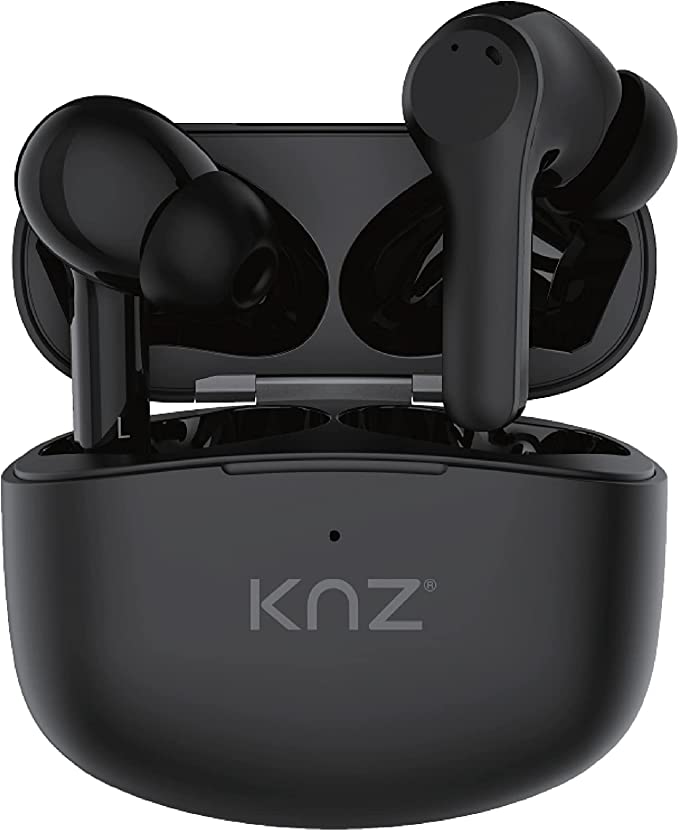The Clarity Compromise: Deconstructing the Engineering Trade-Offs in Budget Wireless Earbuds
Update on Oct. 30, 2025, 4:52 p.m.
For decades, the Monster brand, under the leadership of Noel Lee, meant one thing: high-impact, bass-forward sound, often paired with premium prices. But times have changed. Today, the True Wireless Stereo (TWS) market is fiercely competitive, forcing every brand—even a titan like Monster—to make strategic compromises to hit an affordable price point.
So, how does a modern, budget-friendly product carry the weight of that legacy?
To truly understand what you’re buying in the sub-$150 price bracket, we have to look past the marketing. We’re going to use the Monster Clarity 102 Plus Wireless Earbuds as our textbook case study, dissecting the precise engineering decisions that allow it to deliver key features while keeping costs down. This isn’t just about reviewing a product; it’s about learning to read the science of compromise baked into every affordable audio device.

The Monster Clarity 102 Plus Wireless Earbuds and case, showcasing the compact in-ear design.
1. The Sound Signature Trade-Off: Fixed DSP vs. Personalized EQ
The first and most fascinating trade-off in affordable earbuds is the sound profile. Monster promises “Pure Monster Sound,” which the specifications define as being enhanced by a unique Digital Audio Processor (DSP) to boost mid and high frequencies.
A Mentor’s Lesson: Decoding the DSP
A Digital Signal Processor (DSP) is essentially a tiny, dedicated computer chip inside the earbud. Its job is to intercept the raw digital music data and apply a pre-set equalization (EQ) curve before the sound ever reaches the physical drivers (the small speakers).
- What this means: The sound you hear is not purely the result of the physical driver’s quality; it’s a software-sculpted experience.
- The “Monster Sound” Strategy: By focusing on enhancing the mid-to-high frequencies, the DSP leverages a psychoacoustic principle: our ears are hyper-sensitive to the mid-range (where voices live). Boosting this makes the audio feel clearer, more detailed, and—crucially—louder to our brains, creating the perception of a “Hi-Fi Stereo” sound without requiring massive, expensive drivers.
The Compromise: No App, Fixed Mandate
Here is the essential trade-off: The Clarity 102 Plus delivers a distinct, pre-programmed house sound, but this is a mandate, not a choice.
A significant complaint from users is the lack of a companion application for customizing the EQ or controls. This absence is a direct result of cost allocation. Developing a stable, feature-rich app and maintaining its software across different operating systems is a substantial, ongoing expense. By deciding against an app, the engineering budget is freed up to fund the advanced DSP chip and the multi-mic system.
The Pro-Tip: When you see an earbud promising a specific “house sound” with no customizable EQ, you are benefiting from the brand’s specific engineering expertise (in this case, Noel Lee’s decades of audio legacy) at the cost of personal preference. You must take the sound profile they give you.
2. The Focus on Function: Why ENC Wins Over ANC on a Budget
In the premium market, Active Noise Cancellation (ANC)—which creates a cone of silence for the listener—is standard. In the budget market, a different feature takes priority: Environmental Noise Cancellation (ENC).
The Monster Clarity 102 Plus features a 4-Mic AI Clear Calls system with ENC. This choice reveals exactly where the brand focused its budget for real-world functionality.
ENC vs. ANC: Who Benefits?
- ANC (Active Noise Cancellation): Focuses on the Listener. It uses microphones to listen to external noise and generate an inverse sound wave to cancel it out, making the user’s listening environment quieter. This requires significant processing power and complex acoustic design, raising the cost.
- ENC (Environmental Noise Cancellation): Focuses on the Person on the Other End. The four microphones (two per bud) and an AI algorithm work together to isolate the speaker’s voice from background sounds (like wind, chatter, traffic).
By prioritizing a robust ENC system, the Clarity 102 Plus invests in a non-negotiable feature for modern life: crystal-clear calls. This technology—often called beamforming—uses the multi-mic array to create a digital “spotlight” on your voice, making your communication effective even in noisy environments, which is a higher utility for many budget buyers than having imperfect ANC.

The charging case for the Monster Clarity 102 Plus, featuring the USB-C charging port and compact form factor, essential for the 30-hour extended playtime.
3. The Unsung Physics: Fit, Weight, and Acoustic Coupling
No amount of digital processing (DSP) or complex microphone arrays (ENC) can overcome poor acoustic coupling. This is the most crucial, yet often misunderstood, principle in earbud performance.
Acoustic Coupling: Your Pro-Tip for Bass
Acoustic coupling is the perfect seal between the ear tip and your ear canal. If the seal is poor, the following occurs:
1. Bass Leaks Out: Low frequencies (bass) are the first to escape through any gap.
2. External Noise Leaks In: This requires you to turn the volume up, potentially leading to hearing fatigue.
The Clarity 102 Plus addresses this with two key features:
- Featherweight Fit (4 grams): At only 4g, the earbuds are 15% lighter than many standard models. Lighter earbuds create less leverage and stress on the ear, helping them stay in place and reducing the risk of fatigue during long listening sessions (like utilizing the 6 hours of continuous playtime).
- Four Ear Cap Sizes: Including four pairs of different-sized rubber caps (M pre-installed) is a necessary step to help the user achieve that critical seal.
The Reality Check: User feedback is often mixed on fit—some praise the snug feel, while others struggle to find a secure fit that delivers the advertised sound quality. This is a common challenge for all universal-fit earbuds, regardless of price. A specific lightweight, ergonomic design that works for 80% of people is a huge success, but it will never be a perfect guarantee for 100%. If you can’t get a seal, the “Pure Monster Sound” will be lost.

A detailed view highlighting the lightweight and ergonomic fit of the Monster Clarity 102 Plus earbud, designed for long-lasting comfort.
4. The Foundation: Standardizing Connectivity and Endurance
The rest of the Clarity 102 Plus specification sheet is dedicated to what we call modern table stakes—features that are now essential for entry into the TWS market, but are no longer unique differentiators.
- Bluetooth 5.4 Connectivity: This is a crucial foundation. Newer Bluetooth versions ensure more stable transmission (fewer dropouts), lower power consumption (better battery life), and lower latency (less delay between what you see and what you hear). It is a pragmatic choice that guarantees a reliable connection experience.
- 30-Hour Extended Playtime: The 6 hours from the buds plus the additional 24 hours from the charging case is the current benchmark for consumer satisfaction. This is a budget allocation focused on utility—giving the user the most time away from a wall socket.
- IPX6 Water Resistance: This rating is scientifically defined as protection against powerful jets of water. This means they are safe for heavy sweating, rain, and gym use. It’s a core feature that confirms the earbuds’ suitability for sports, as the user question implies. They are built to be durable enough for active life.

A visual emphasizing the IPX6 water-resistant feature of the Monster Clarity 102 Plus, suitable for sports and active use.
Conclusion: Mastering the Audio Bill of Materials
The Monster Clarity 102 Plus is a fascinating study in budget audio engineering. It shows us how a brand with a strong audio legacy makes its core decisions:
- Investment Focus: High-impact DSP for a distinctive, fixed sound signature, and a powerful 4-Mic ENC system for essential call clarity.
- Cost Savings: Avoiding the cost of app development, which translates to no customizable EQ or control mapping.
- Foundation: Utilizing modern, efficient standards like Bluetooth 5.4, long battery life, and IPX6 durability to ensure a high level of utility.
The ultimate takeaway is this: When assessing any affordable earbud, don’t just look at the list of features—look for the features that are missing. Those omissions are not oversights; they are the planned, strategic compromises that allow the essential technologies to be included at a low price.
By understanding the “Clarity Compromise”—the choice to prioritize fixed sound and call quality over customization—you are no longer a passive consumer. You are an informed buyer, equipped to recognize the true value and the deliberate limitations of budget audio technology. Now you can confidently decide if the engineering trade-offs align with your specific audio priorities.


